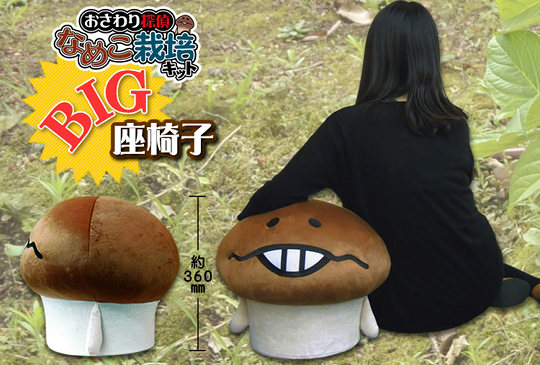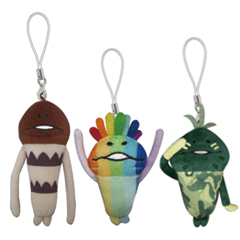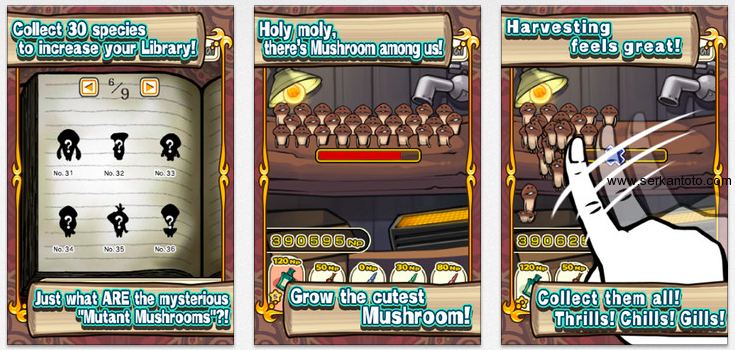Puzzle/RPG hybrid Puzzle & Dragons and messenger app LINE aren’t the only hypes in Japan’s smartphone world right now.
The third big name that must be mentioned in this context is “Nameko Saibai”, a series of super-quirky smartphone games that center on cute mushroom characters (nameko is a special mushroom, while saibai means cultivation).
Tokyo-based Beeworks probably didn’t know they were to produce the country’s first really big smartphone game when they launched the first Nameko title, namely “Nameko Saibai Kit” (English version: “Mushroom Garden” or “Funghi Gardening Kit”) in June 2011 on iOS – eight months before Puzzle & Dragons.
Today, if there is one company that can be labeled as a Japanese counterpart of Rovio (on a small scale), it’s Beeworks.
Nameko Saibai Kit – The First Game In The Franchise
As the title suggests, players need to grow mushrooms on a piece of wood, wait a while for them to grow before harvesting them by swiping over the screen.
There are varieties of Nameko, some of which are harder to get than others. The goal of the game is to “collect them all”.
There is basically no real game play, no high-quality graphics or music (quite the contrary), and no social hooks.
Reasons I heard from Japanese players why they like the game so much in the past include “I like the feeling of swiping over the screen to harvest the mushrooms”, “The Namekos are so cute”, or “I love it how they say NNFF NNFF when I harvest them”.
This first Nameko game took Japan by storm (without any marketing at the start) and currently boasts 11 million downloads across iOS and Android, putting it in Puzzle & Dragons territory.
Nameko Saibai Kit – Variations And Downloads
Much like Rovio with Angry Birds, Beeworks was very clever in creating variations of essentially the same game and making use of its existing user base for distribution.
There are two different versions in addition to the original, namely Nameko Saibai Kit Seasons (users can harvest different mushrooms, depending on the season) and Nameko Saibai Kit Deluxe (which has some improvements, i.e. BGM).
Beeworks has been seeing considerable success with this strategy, in Japan and some Asian countries. The company is offering English versions of Nameko (on iOS and Android), but success outside Asia has been limited so far.
As of April 7 this year, all Nameko Saibai Kit games have been downloaded 30,192,789 million times worldwide:
Downloads on iOS
Nameko Saibai Kit
downloads: 5,173,885
release date: 2011.6.30
Nameko Saibai Kit Seasons
downloads: 4,638,417
release date: 2011.12.2
Nameko Saibai Kit Deluxe
downloads: 2,491,308
release date: 2012.7.20
Downloads on Android
Nameko Saibai Kit
downloads: 5,864,451
release date: 2011.12.21
Nameko Saibai Kit Seasons
downloads: 4,846,207
release date: 2012.3.29
Nameko Saibai Kit Deluxe
downloads: 3,671,732
release date: 2012.7.20
Nameko Saibai Kit (China/Korea versions)
downloads: 2,751,159
release date: 2012.6.15
Nameko Saibai Kit Seasons (China/Korea versions)
downloads: 755,630
release date: 2012.10.26
Beeworks – Parallels To Rovio
The Japanese developer can’t think in billions like Rovio does, but the numbers above are pretty impressive, and there are a few parallels between the two companies.
For instance, much like Rovio, Beeworks was a small company that was around for a long time but largely unknown before landing their first real big hit (Beeworks was established in 1998, Rovio in 2003).
Both companies rolled out variations of their hits in quick succession and cross-promoted them inside the existing user base: the “Seasons” versions even share the exact same idea.
Both franchises are specifically made for touch screens, feature “character-focused” design, come with a low learning curve, come with extra-cute graphics and sound, etc. etc.
But the biggest parallel can actually be found somewhere else.
Nameko’s popularity in Japan made it possible for Beeworks to build a successful merchandising business around its IP: there are now Nameko-themed toys, phone cases, stationery, key holders, clothes, music CDs (really), candy, coffee mugs, manga, furniture, slippers etc. etc.



The line-up of official Nameko goods can be found here (the list is not even complete: for example, it doesn’t show there are special Nameko stickers available for LINE, too.)
What’s interesting (and a big difference to Angry Birds) is that all Nameko games are entirely free: there are no download fees, no premium versions, and no in-app-purchases.
In addition, Beeworks is relatively easy on the ads, a lot of which are just used to drive traffic from one Nameko game to the other.
The strategy here is to bring the game in front of as many eye balls as possible and make money (almost) entirely with non-game related products later.
Beeworks isn’t saying how well this is working, but anecdotally speaking, I can see the strategy of building a character goods business on top of a free game series succeeding – at least here in “character-crazy” Japan (the title’s Facebook page offers a lot of hints).
I even believe the life cycle of the Nameko merchandising business could be longer than that of the apps, which may be something Rovio is betting on as well with Angry Birds.
But so far, the game itself is still working: social games specialist Chiho Komoriya (who is part of a family of farmers in Akita prefecture) goes so far as to say Nameko’s popularity is responsible for the recent increase in demand for real nameko mushrooms in the country.

